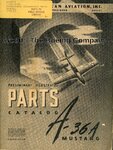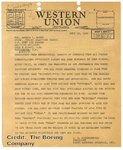MIflyer
Captain
That old business about the Allison V-1710 engine not being supercharged has been making the rounds for a long time. And it is pure BS. The Allison in the P-39, P-40 and P-51 was supercharged to the same degree that the Merlin was in the Hurricanes and the Spitfires Mk I, IA, II and V.
But the Allison did not have a two speed supercharger, which limited it's performance in some respects. The A-36 had the Allison set up to maximize its performance at about 5,000 ft while the P-51A had it set up for max speed at 20,000 ft.
The P-38 had two stages of supercharging, the built in supercharger of the Allisons each being fed by a turbosupercharger.
In the case of the V-1710 in the P-39, P-40, and P-51, there was no supercharger "On/Off" switch, unlike some of the earlier Merlin installations and that may have led some pilots to conclude it did not have one. Also, the XP-39 initially had a turbosupercharger feeding the Allison's internal supercharger, but it was deleted when they found that the installation actually was slower than just the Allison by itself. Some writers later concluded that the USAAC had the turbo deleted due to a desire to emphasize low altitude performance but nothing could be further from the truth. The Army Air Corps emphasized high altitude performance.
The V-1710 in the P-63 had an additional stage of supercharging using an auxiliary supercharger run off the starter interface to substitute for the turbo; it used a hydromatic automatic transmission to vary supercharging.
But the Allison did not have a two speed supercharger, which limited it's performance in some respects. The A-36 had the Allison set up to maximize its performance at about 5,000 ft while the P-51A had it set up for max speed at 20,000 ft.
The P-38 had two stages of supercharging, the built in supercharger of the Allisons each being fed by a turbosupercharger.
In the case of the V-1710 in the P-39, P-40, and P-51, there was no supercharger "On/Off" switch, unlike some of the earlier Merlin installations and that may have led some pilots to conclude it did not have one. Also, the XP-39 initially had a turbosupercharger feeding the Allison's internal supercharger, but it was deleted when they found that the installation actually was slower than just the Allison by itself. Some writers later concluded that the USAAC had the turbo deleted due to a desire to emphasize low altitude performance but nothing could be further from the truth. The Army Air Corps emphasized high altitude performance.
The V-1710 in the P-63 had an additional stage of supercharging using an auxiliary supercharger run off the starter interface to substitute for the turbo; it used a hydromatic automatic transmission to vary supercharging.


